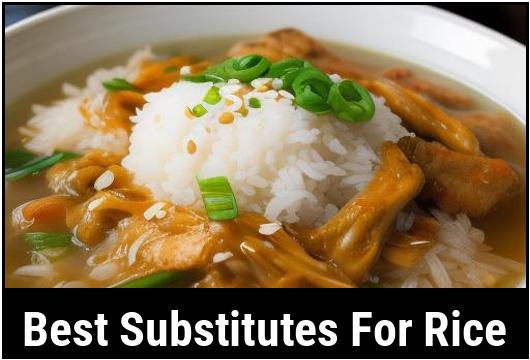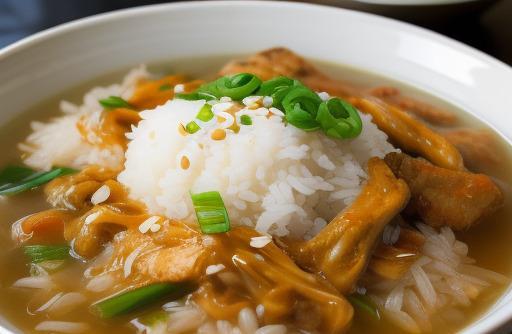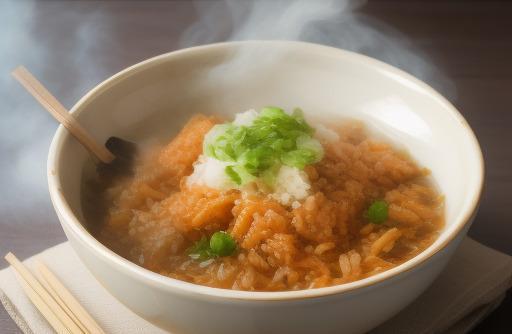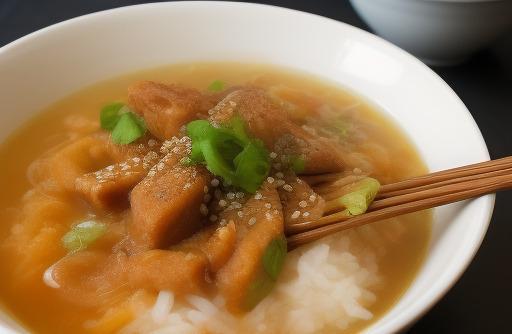- You are here:
- Home »
- Food Substitutes
- » Best Substitutes For Rice
Best Substitutes For Rice

Rice is a staple food in many cultures around the world, but there are times when you may need to find a substitute for rice. Whether you have dietary restrictions, are trying to reduce your carb intake, or simply want to mix up your meals, there are plenty of alternatives to rice that can be just as delicious and satisfying. In this article, we will explore the best substitutes for rice, how to choose the right one for your needs, and share some helpful tips for cooking with these substitutes.
Key Takeaways
- Rice is a versatile and widely consumed grain, but there are times when you may need to find a substitute for it.
- There are several types of substitutes for rice, including grains, vegetables, legumes, and seeds.
- When choosing a substitute for rice, consider factors such as texture, flavor, nutritional value, and cooking method.
- Cooking with rice substitutes may require some adjustments in terms of cooking time and liquid ratios.
- There are numerous recipes that incorporate rice substitutes, allowing you to create tasty and diverse meals.
Why You Need A Substitute For Rice
1. Dietary Restrictions
One of the main reasons why people look for substitutes for rice is due to dietary restrictions. Rice is high in carbohydrates, which may not be suitable for those following a low-carb or keto diet. Additionally, individuals with conditions like diabetes or insulin resistance may also need to limit their intake of carbohydrates, making rice a less favorable option.
2. Health And Nutritional Goals
Another reason to seek alternatives to rice is to diversify your diet and incorporate a wider range of nutrients. While rice can be nutritious and provide essential carbohydrates, it may lack certain vitamins and minerals found in other foods. By exploring rice substitutes, you can introduce different nutrients into your meals, promoting a more well-rounded diet.
3. Culinary Variety
Substituting rice can also be a way to add culinary variety to your meals. If you’re looking to experiment with flavors and textures, trying out different substitutes can open up a world of new dishes. Whether you want to explore different grains, vegetables, or legumes, there are numerous options available to keep your meals interesting and enjoyable.
Types Of Substitutes For Rice

There is a wide range of substitutes for rice that can suit different dietary preferences and culinary needs. These substitutes can be grouped into several categories:
1. Grains
Grains are a popular choice for rice substitutes as they can provide a similar texture and are often just as versatile. Some common grain substitutes for rice include:
-
Quinoa: Quinoa is a pseudocereal that is a complete protein, meaning it contains all nine essential amino acids. It has a slightly nutty flavor and a fluffy texture when cooked. Quinoa can be used in a variety of dishes, including salads, stir-fries, and pilafs. It is also gluten-free, making it suitable for those with wheat allergies or gluten intolerance.
-
Cauliflower Rice: Cauliflower rice has gained popularity in recent years as a low-carb alternative to rice. It is made by finely chopping or grating cauliflower florets to resemble the texture of rice grains. Cauliflower rice can be enjoyed raw or cooked and is often used in grain-free recipes such as cauliflower fried rice or as a base for stir-fries.
-
Barley: Barley is an ancient grain with a mild, nutty flavor. It has a slightly chewy texture when cooked and works well as a substitute for rice in dishes like casseroles, soups, and risottos. Barley is packed with fiber, vitamins, and minerals, making it a nutritious option.
2. Vegetables
Vegetables can be an excellent substitute for rice, adding more color, fiber, and nutrients to your meals. Some vegetable substitutes for rice include:
-
Zucchini Noodles: Zucchini noodles, also known as "zoodles," are made by spiralizing or julienning zucchini into noodle-like strands. They have a mild flavor and can be enjoyed raw, sautéed, or lightly steamed. Zucchini noodles are low in calories and carbohydrates, making them a popular choice for those following a low-carb or keto diet.
-
Cabbage Rice: Cabbage rice is made by finely shredding or grating cabbage into rice-sized pieces. It has a slightly crunchy texture and a mild flavor, making it a versatile substitute for rice. Cabbage rice can be used in stir-fries, fried rice dishes, or even raw in salads.
3. Legumes
Legumes are nutrient-dense, protein-rich foods that can be a great substitute for rice. Some legume substitutes for rice include:
-
Lentils: Lentils are small, disk-shaped legumes that come in various colors, including green, brown, and red. They have a mild, earthy flavor and a slightly grainy texture when cooked. Lentils can be used in place of rice in dishes like stews, salads, and pilafs, or as a filling for stuffed vegetables.
-
Chickpeas: Chickpeas, also known as garbanzo beans, are creamy legumes with a nutty flavor. They can be mashed up to create a rice-like texture or used whole in dishes like curries, stews, and salads. Chickpea flour or besan can also be used as a gluten-free substitute for rice flour in baking.
4. Seeds
Seeds may not be the first thing that comes to mind when thinking of rice substitutes, but they can add a unique texture and boost the nutritional content of your meals. Some seed substitutes for rice include:
-
Quinoa: While quinoa is technically a pseudocereal, it is often referred to as a grain substitute. However, it is worth mentioning again as it is an excellent source of plant-based protein and has a significantly different nutritional profile compared to rice.
-
Cauliflower Rice: Cauliflower can be grated or blended into rice-sized pieces, similar to its vegetable counterpart. However, cauliflower is also a member of the seed family, making it a great option for those looking for a seed-based rice substitute.
Best Substitutes For Rice

Now that we have explored the different types of substitutes for rice, let’s delve into some of the best options within each category:
1. Grains
-
Quinoa: Quinoa is often regarded as one of the best rice substitutes due to its nutritional value, versatility, and pleasant texture. It can be cooked in a similar way to rice and used in a variety of dishes.
-
Cauliflower Rice: Cauliflower rice is an excellent low-carb alternative to rice. It is easy to prepare and can be used in both raw and cooked dishes.
2. Vegetables
-
Zucchini Noodles: Zucchini noodles are light, refreshing, and a great way to add more vegetables to your diet. They can be used in place of rice in stir-fries, pasta dishes, or salads.
-
Cabbage Rice: Cabbage rice is a unique substitute that adds a slight crunch and a mild flavor to your meals. It works well in Asian-inspired dishes like fried rice or as a base for stir-fries.
3. Legumes
-
Lentils: Lentils are a protein-packed substitute for rice that can be used in a variety of dishes. They are particularly popular in soups, stews, and salads.
-
Chickpeas: Chickpeas are a versatile legume that can be used whole or mashed to mimic the texture of rice. They are great in curries, salads, or as a side dish.
4. Seeds
-
Quinoa: As mentioned before, quinoa stands out as a seed-based substitute due to its high protein content and versatility. It works well in a variety of dishes, from pilafs to salads.
-
Cauliflower Rice: Cauliflower can be considered a seed substitute because it is a member of the seed family. It can be used in the same way as cauliflower rice, providing a low-carb and nutritious alternative.
These substitutes for rice offer different flavors, textures, and nutritional profiles, allowing you to experiment with new dishes and still enjoy a satisfying meal.
Choosing The Right Substitute For Rice

When selecting the right substitute for rice, several factors come into play. Considerations such as texture, flavor, nutritional value, and cooking method can help you choose a substitute that best suits your needs.
1. Texture
Texture plays a significant role in the overall satisfaction of a dish. If you enjoy the softness and fluffiness of rice, options like quinoa or cauliflower rice can be good substitutes. On the other hand, if you prefer a slightly chewy texture, barley or lentils can be excellent choices.
Consider the specific texture you are craving or looking to replicate when choosing a rice substitute.
2. Flavor
Rice has a relatively neutral flavor, which makes it a versatile base for various dishes. When selecting a substitute, consider whether you want a similar subtle flavor or would like to incorporate a more distinct taste into your meals.
Quinoa and cauliflower rice have slightly nutty flavors that can complement a wide range of dishes. Lentils and barley, on the other hand, have earthy and slightly savory flavors that can add depth to your dishes.
3. Nutritional Value
Rice provides carbohydrates and is low in fat, but it lacks certain nutrients found in other substitutes. When choosing a substitute, consider the nutritional value you want to incorporate into your meals.
Quinoa and lentils are both excellent sources of plant-based protein and contain essential amino acids. Barley is high in fiber, helping to promote healthy digestion. Cauliflower rice and other vegetable substitutes are rich in vitamins, minerals, and antioxidants that are essential for overall health.
4. Cooking Method
Different rice substitutes require different cooking methods and times. Some substitutes, like quinoa and lentils, can be cooked on the stovetop similarly to rice. Others, like cabbage rice and zucchini noodles, can be enjoyed raw or lightly cooked. Consider the cooking time and method that will work best for the substitute you choose.
Pro Tip:
Adjust Cooking Methods and Liquid Ratios:
When cooking with substitutes for rice, it is essential to adjust your cooking methods and liquid ratios. Some substitutes may require less or more liquid than rice. For example, quinoa typically requires a 2:1 liquid-to-quinoa ratio, while cauliflower rice may not require any additional liquid. Experiment with different cooking techniques and liquid amounts to achieve the desired texture and flavor.
Cooking With Substitutes For Rice

Cooking with rice substitutes can be an exciting and creative way to prepare meals. Here are some tips to help you make the most of your rice substitutes:
-
Experiment with flavors: Substituting rice opens up a world of new flavors and textures. Don’t be afraid to experiment with herbs, spices, and seasonings to enhance the taste of your dishes.
-
Try different cooking methods: Rice substitutes can be prepared using various methods, such as boiling, sautéing, steaming, or even raw. Explore different techniques to find the best way to cook your chosen substitute.
-
Combine different substitutes: Mix and match different substitutes to create unique and flavorful dishes. For example, you can combine zucchini noodles with lentils, or quinoa with cauliflower rice to create a more complex meal.
-
Consider portion sizes: Rice substitutes may have different calorie and carbohydrate contents than rice. Be mindful of portion sizes to ensure you’re consuming an appropriate amount for your dietary needs.
-
Add texture and variety: Rice substitutes can add texture and variety to your meals. Combine them with crunchy vegetables, creamy sauces, or protein sources to create a balanced and satisfying dish.
Recipes Using Substitutes For Rice

Now that you are equipped with ideas and tips for cooking with rice substitutes, here are a few recipe ideas to inspire you:
1. Quinoa Salad With Roasted Vegetables
Ingredients:
- 1 cup cooked quinoa
- Assorted roasted vegetables (e.g., bell peppers, zucchini, eggplant)
- Fresh herbs (e.g., parsley, cilantro)
- Olive oil
- Lemon juice
- Salt and pepper to taste
Instructions:
- Cook the quinoa according to package instructions and let it cool.
- Chop the roasted vegetables into bite-sized pieces.
- In a large bowl, combine the cooked quinoa, roasted vegetables, and fresh herbs.
- Drizzle olive oil and lemon juice over the salad and season with salt and pepper.
- Toss everything together until well combined. Serve chilled as a refreshing salad.
2. Stir-fried Cabbage Rice With Tofu
Ingredients:
- 1 small head of cabbage, shredded
- 1 block of tofu, cubed
- 2 cloves of garlic, minced
- 1 tablespoon soy sauce
- 1 tablespoon sesame oil
- Salt and pepper to taste
Instructions:
- Heat a small amount of sesame oil in a large skillet or wok over medium heat.
- Add the minced garlic and cook for a minute until fragrant.
- Stir in the shredded cabbage and cook for about 5 minutes until slightly wilted.
- Push the cabbage to one side of the pan and add the cubed tofu to the other side. Cook for a few minutes until the tofu is heated through.
- Mix everything together and season with soy sauce, sesame oil, salt, and pepper.
- Continue cooking for another 2-3 minutes until the flavors are well combined. Serve as a flavorful side dish or main course.
Storage And Shelf Life Of Substitutes
The storage and shelf life of rice substitutes can vary depending on the specific substitute and how it is prepared. Here are some general guidelines:
-
Grains: Grains like quinoa and barley can be stored in a cool, dry place in an airtight container for up to 1 year. Cooked grains can be refrigerated for up to 4-5 days.
-
Vegetables: Vegetable substitutes like zucchini noodles and cabbage rice are best consumed fresh. However, if leftovers are stored properly in an airtight container in the refrigerator, they can last for up to 3 days.
-
Legumes: Cooked legumes such as lentils and chickpeas can be refrigerated in an airtight container for up to 4-5 days. They can also be frozen for longer storage.
-
Seeds: Seeds like quinoa and cauliflower rice can be stored in a cool, dry place in an airtight container for up to 1 year. However, cauliflower rice is best consumed fresh or within 2-3 days if stored in the refrigerator.
It is important to note that the shelf life and storage recommendations may vary slightly depending on the specific substitute and the storage conditions. Always use your judgment and check for any signs of spoilage before consuming.
Conclusion
Substituting rice with alternatives can be a fantastic way to diversify your diet, accommodate dietary restrictions, and add more flavor and nutrients to your meals. Whether you choose to explore grains, vegetables, legumes, or seeds, there are plenty of options to suit your taste and nutritional needs. Remember to consider factors like texture, flavor, nutritional value, and cooking method when selecting a substitute. With a little creativity and experimentation, you can create delicious and satisfying meals using these rice substitutes. So go ahead and start incorporating these substitutes into your culinary repertoire for a more varied and exciting dining experience.
Pro Tip:
Don’t be afraid to get creative and experiment with different rice substitutes. Mixing and matching ingredients can lead to delicious and unexpected flavor combinations. Enjoy the process of discovering new and exciting meals!
FAQS
What Are The Best Substitutes For Rice?
There are several great alternatives to rice such as quinoa, couscous, cauliflower rice, barley, and bulgur. All of these options are healthy and packed with nutrients that are essential for your body.
Is Quinoa A Good Substitute For Rice?
Yes, quinoa is an excellent substitute for rice, especially if you are looking for something that is gluten-free and high in protein. It is also one of the few plant-based options that contain all nine essential amino acids.
Can I Use Barley Instead Of Rice In My Recipes?
Yes, barley is a versatile grain that is often used as a rice substitute in recipes such as risotto and pilaf. It has a nutty taste and a chewy texture that complements the flavors of many dishes.
How Do I Make Cauliflower Rice At Home?
Cauliflower rice can be easily made at home by grating a head of cauliflower or using a food processor to pulse it into small, rice-like pieces. It can be used as a low-carb and nutrient-rich alternative to rice in many recipes.
Is Bulgur A Good Substitute For Rice?
Yes, bulgur is a nutritious and flavorful alternative to rice that is commonly used in Middle Eastern cuisine. It is made from parboiled cracked wheat and has a slightly nutty taste and a chewy texture. Bulgur is also low in fat and high in fiber, making it a great choice for a healthy diet.
Sources
About the Author Jenny
I'm Jenny, a housewife with an unwavering passion for food. My culinary journey began with my grandmother's kitchen, and it's now a full-fledged food blog. I've turned my love for cooking into a creative outlet, sharing recipes and stories with a global community of fellow food enthusiasts. It's proof that being a housewife can also mean pursuing your passions and savoring life's delectable moments.
